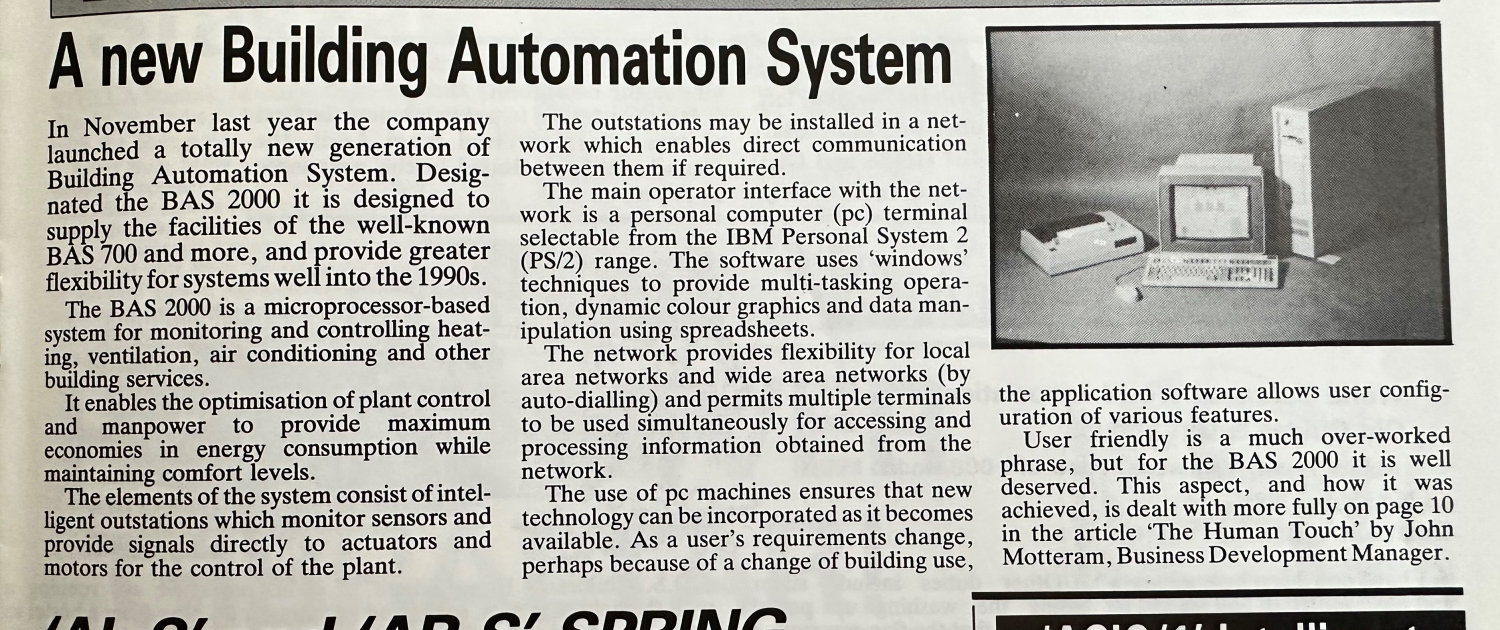
The evolution of BEMS; a brief look over the last 70 years
Exploring the evolution of BEMS; from basic controls to smart, sustainable solutions
Building Energy Management Systems (BEMS) have come a long way since the 1960s, when the first basic controls emerged. Over the last six decades, the evolution of BEMS has been rapid. The technology has been revised, adapted and modernised to meet changing efficiency – and sustainability – demands. Today, an optimised BEMS is anything but basic. It’s a critical component in the design and operation of any commercial building. To appreciate how far our energy management technology has come, let’s look back at the evolution of BEMS.
We’ll start by jumping back to the 1950s. From here, we’ll move through each decade, exploring the defining moments that shaped – or continue to shape – our BEMS; from the rise of automation to the Internet of Things (IoT).

Sustainable Solutions: The Future of BEMS
Buildings have a significant impact on the environment. They account for 40% of the earth’s energy consumption and a third of greenhouse gas emissions. As a result, organisations around the world are prioritising sustainable practices as they strive to become net zero.
To meet growing sustainability demands, BEMS and associated smart technology are constantly adapting to enhance capabilities. Today, they can even integrate renewable energy sources – from solar panels and wind turbines to energy storage systems. An important step in the evolution of BEMS, it means we can now optimise the generation, storage and consumption of renewable energy in buildings.
Our smart solutions can even participate in demand response programmes, where they dynamically adjust energy usage based on grid conditions and reduce peak demand, contributing to grid stability and sustainability.
Going forward, the impressive scope of what we can achieve, particularly from a sustainability standpoint, will only grow. We can expect many more interesting chapters in the evolution of BEMS, just in the next couple of decades.
What happens now?
The evolution of BEMS has been driven by significant advancements in technology, integration and analytics. From simple energy monitoring systems to AI-powered platforms, BEMS has become an indispensable tool for optimising energy usage, reducing costs and minimising environmental impact.
While we don’t know how far smart energy technology will go, we know it’ll continue to incorporate new technologies and ultimately help to create sustainable smart buildings of the future.


Get in touch
Enjoyed reading about the evolution of BEMS? Our people have expert, in-depth knowledge of this industry; from past to present, as well as predicted future trends.
If you have any questions, feel free to reach out. We’d love to hear from you. We’ve got offices across the UK. Click here to check where your local office is and drop them a message.












